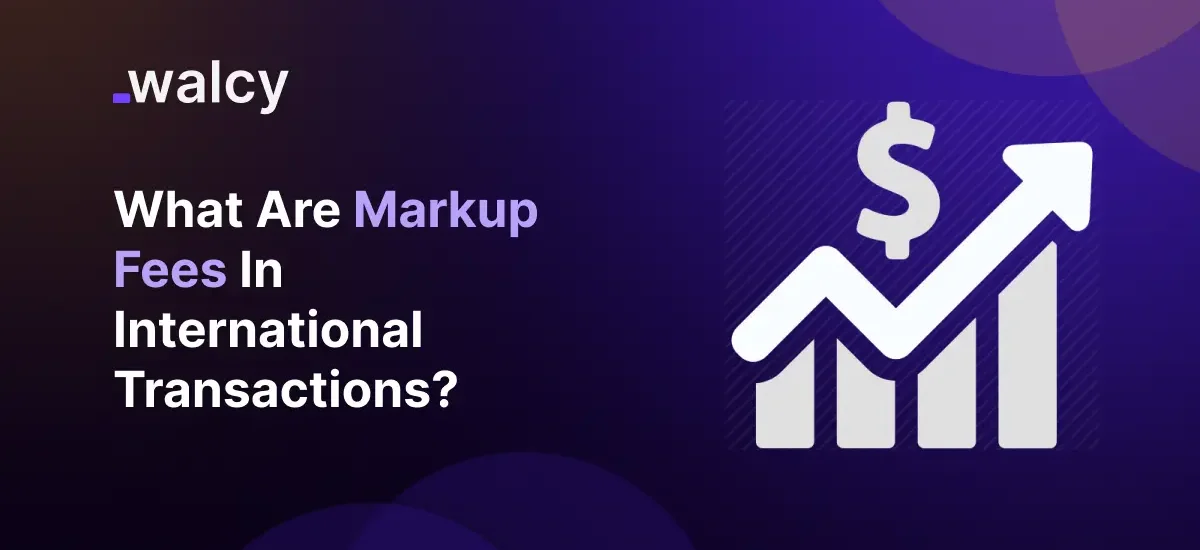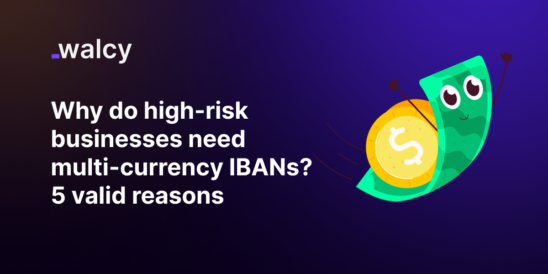International transactions, in a rapidly globalizing world, are part and parcel of the life of any business or individual. Be it buying goods from another country, booking a hotel abroad, or doing business with overseas partners the final amount on the bill will come higher than the price originally offered to him or her. Very often, this difference is related to the markup fee charge. This hence implies that for any person to engage in international transactions, understanding these fees is very important as this will run quickly and result in serious financial damages.
What Are Markup Fees?
Markup fees, also known as foreign currency markup fees or forex markup fees, are additional charges banks, credit card companies, and payment processors may include whenever one makes a transaction in someone else’s currency. The fee is generally a small percentage of the total amount of the transaction and is charged any time there is a conversion of currency.
Markup fees are charged to compensate for one currency being exchanged for another. These fees may, however, be more than the actual cost of conversion, meaning that financial institutions get their share of profit through the transaction. That said, anytime you travel abroad and use your card or make an online purchase, you could be paying more than you think.
The markup is an additional amount on top of the exchange rate that the bank or the payment provider offers, which is more expensive compared to the market rate. This amount differs between institutions and by card or account type. One must, therefore, be aware of these fees to avoid becoming a victim of extra costs.
How Do Markup Fees Work?
When you charge something in another currency, there will be a request from the merchant’s bank to pay it in that currency. Your bank will later convert the transaction amount to your home currency if your bank account or credit card is denominated in another currency. In doing this, the bank or the payment provider will add a markup fee to the transaction.
This is usually a markup fee, often in percentage terms of the total amount, which is appended to the transaction during currency conversion. Once more, this is not always explicitly indicated in your view so that you actually can see how much more you are paying. The added cost varies by bank or credit card provider, and some institutions may apply additional layers of fees on top of the markup. These fees add up over time and increase the true cost of your international transaction.
Knowing what these fees are will also help you in managing your expenses and avoiding unnecessary extra costs. For example, if the thing you buy costs 100 euros, your bank may charge you $110 for that, but with a 3% mark-up fee, you would end up paying $113. Knowing about the fees will help you keep your expenses in order and avoid irrelevant costs that are not necessary.
Read about: International Payment Fees | The Essential guide.
Common Types of Markup Fees
Some of the types of markup fees that can be imposed on international transactions include:
Markup fee on foreign currency:
This is the most basic form of the markup fee. It is a % based fee charged over and above the total amount for any transaction that is made using some other country’s foreign currency. This amount is generally charged during the conversion and varies from bank to bank and card provider. For example, if your bank has a foreign currency markup of 3%, you’d pay $30 extra for spending $1,000 abroad.
Cross Currency Markup Fee:
A fee applied when the transaction is done using a currency different from the base currency, other than the transaction currency itself. This is just another name for the foreign currency markup fee, but this one is charged in cases where you need to buy something in a country using a currency that the card is based on and different from what is being used locally.
Credit Card Markup Fee:
Most credit card companies charge a small markup fee for international purchases. This is usually added as a percentage of the transaction amount, and the amount will reflect in your bill automatically when you use your card abroad or for online foreign transactions.
Amex Forex Markup:
American Express cards are quote premium cards, but in reality, they come with relatively and comparatively high Forex markup fees. These are usually set higher compared to other card issuers, reflecting Amex’s premium positioning.
Zero Forex Markup:
This is a feature on the card issued by some banks, which charges no extra charge over and above the forex currency conversion rate. The cards are very useful for frequent fliers and for individuals who deal with foreign vendors in particular.
How Much Do Banks Charge?
Bank markup costs vary greatly depending on the institution, card or account used, and country of transaction. Below are some typical examples:
Major Banks: Most large banks, including Chase, Citibank, and Bank of America, levy a foreign currency markup fee of 2% to 3% of the transaction amount. This will be added to the transaction amount after conversion. The cost may vary according to the terms and conditions of your account or card.
Credit Card firms: Most Visa and MasterCard firms charge a 1% fee for currency translation, with the issuing bank adding 1% to 3%. As previously stated, American Express normally charges between 2.5% and 3.5% fees. These fees are on top of the standard exchange rate and can significantly add to your final transaction cost.
Zero currency Markup Cards: Certain banks and credit card businesses do not impose currency markup fees. Examples include the Chase Sapphire Preferred Card, the Capital One Venture Rewards Card, and Discover cards. These are cards that do not charge additional fees over the exchange rate, making them ideal for foreign transactions. These are especially useful for regular passengers who want to avoid extra fees.
Read about: Hidden Bank Fees: What Are They and How to Avoid Them?
How to Avoid Markup Fees?
Although the markup fees prevail, there are a few strategies that may be utilized to minimize or avoid them:
Select Zero Forex Markup Cards:
Opt for zero Forex markup credit cards. None of the extra fees for even international transactions is charged in these, thus saving lots of money spent on forex conversion. Also, check for any other bundled benefits that might be thrown in with it, such as travel rewards or insurance coverage.
Use Local Currency:
While traveling, always opt for payment in the local currency, rather than choosing your currency. Otherwise, it lets the merchant or the ATM give their own less favorable exchange rate, which is often coupled with hidden markup fees. It will also keep you away from extra conversion charges that the merchant’s bank may levy.
Consider Online Banks and FinTech’s:
Online banks and fintech companies provide very competitive exchange rates, with most of the service providers providing low or no markup fees. Most of these services have more structure, making them transparent and cost-effective for transacting internationally. Besides, they can also offer features such as real-time tracking of the foreign exchange rate and the levying of low transaction costs.
Watch for Updated Exchange Rates:
Always keep a watchful eye on exchange rates before any substantial purchase or money transfer across borders. Some banks and services enable you to lock in a favorable rate in advance. This can help avoid bad rates that can inflate your costs with markup fees.
Negotiate with Your Bank:
If you travel much or deal with many foreign transactions, approach your bank for better fees. Some banks, especially if you are a good and loyal customer, will give you a much lower fee or even zero markup fee. Being in good books with the bank will be a good thing for doing business in a way that you can get more favorable terms and even customization of financial solutions.
You shall love: Saving Money on Cross-Border Payments: All You Need to Know
Conclusion
Markup fees are, therefore, something often overlooked in international transactions, but these little secrets of financial transaction dynamics will wallop your finances like a giant’s fist. The additional fees tacked onto the cost of foreign currency conversions, can swing wildly based on the institution and the type of card or account you use. Knowing how markup fees work and being aware of what exactly incurs them gives you information for making better choices to help lower extra, possible additional costs from international transactions.
Be it while traveling abroad, shopping from overseas retailers, or dealing with overseas business partners—understanding how to detect and avoid such fees can mean significant savings. Picking out the right kind of financial products, using local money, and finding alternative banking solutions are a few of the many successful ways to reduce markup fees. A little careful planning and knowledge can go a long way toward making your international transactions cost-effective, keeping more of your money where it belongs.
You shall like: All About Overseas Payments (2024) – Comprehensive Guide
FAQs
What is a Forex markup fee?
A forex markup fee involves an added cost one would incur over and above the charges of converting any transaction from one currency to another; normally added as a percentage over an exchange rate.
How much do banks charge for markup fees?
Banks charge on average markup fees between 2% and 3% on the transaction amount.
How can I avoid markup fees?
Yes, through zero forex markup credit cards, pay in the local currency, or avail of services having low or no markup fees.
What is the difference between a foreign currency markup fee and a cross-currency markup fee?
A foreign currency markup fee is charged when the transaction is in a currency other than your home currency, and a cross-currency markup is incurred when more than one currency is involved.
Are there any credit cards that come with zero forex markup?
Yes, cards like the Chase Sapphire Preferred and Capital One Venture Rewards come with zero forex markup fees.
How do markup fees impact my total cost of travel?
The markup fees increase the price of traveling due to the addition of a surcharge on every international transaction.
Do follow us on Facebook and LinkedIn, to stay connected with us.



